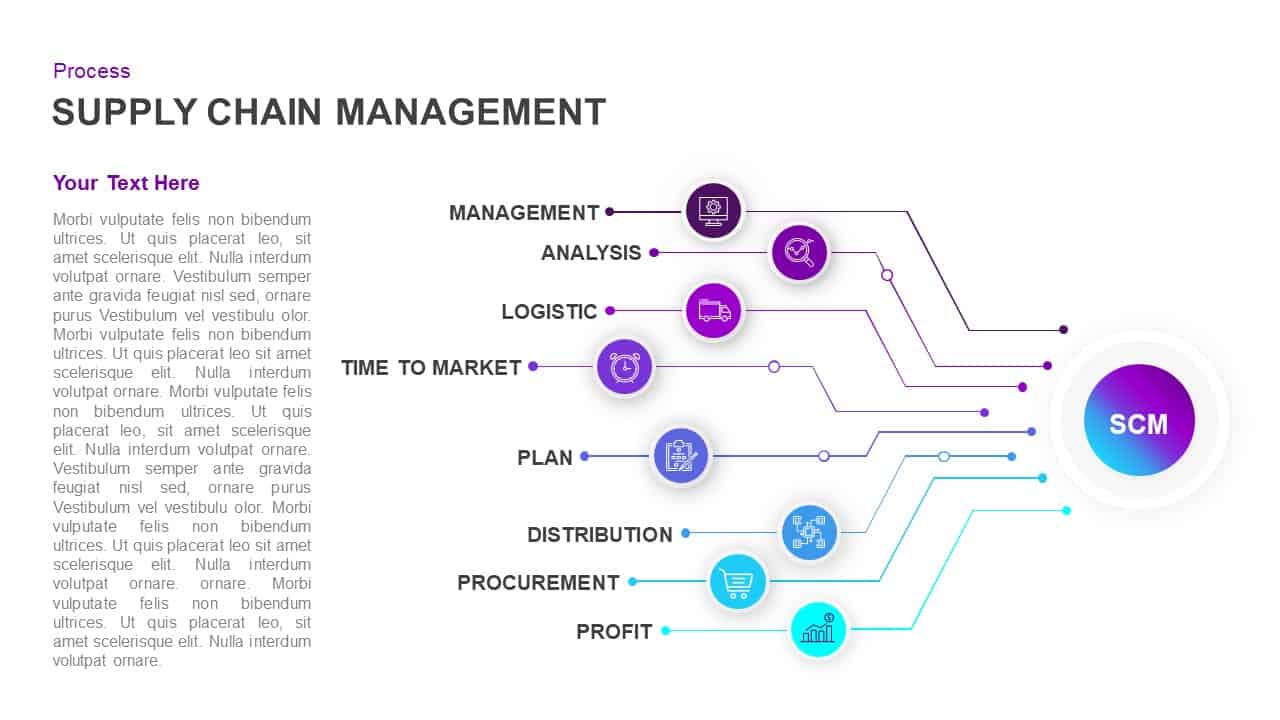Supply Chain Management Template for PowerPoint

Description
Leverage this supply chain management process infographic to visually map key operations and decision points within your organization’s goods flow. This dynamic diagram features eight gradient-colored nodes—management, analysis, logistics, time-to-market, planning, distribution, procurement, and profit—each connected by precision lines to a central SCM hub. Distinct circular icons anchor every stage, while color-coded connectors reinforce relationships and directional flow. A prominent title area and sidebar text placeholder provide context for high-level summaries, KPIs, or strategic objectives, and additional notes fields support detailed commentary.
Engineered for maximum flexibility, this template uses vector shapes and master slides that let you swap icons, adjust gradient hues, or modify connector styles in seconds. Replace default SVG icons with custom graphics, update stage labels and descriptions, or alter line weights to match corporate branding without disrupting the layout. Built-in alignment guides and grid layouts ensure consistent spacing and alignment, while theme-aware color schemes automatically adapt when applying your organization’s palette, delivering a professional, cohesive look.
Optimized for both PowerPoint and Google Slides, this slide renders flawlessly across devices and eliminates version control headaches. Beyond supply chain management, this versatile framework is ideal for illustrating project workflows, operational dashboards, KPI tracking, or multi-departmental collaboration flows. Duplicate or remove stages to tailor complexity, or integrate with supporting slides for deep-dive analyses. Whether you’re presenting to executives, training staff, or reviewing annual performance, this supply chain management process diagram empowers you to communicate complex systems clearly, align stakeholders around key functions, and drive operational excellence with minimal preparation time.
Who is it for
Supply chain managers, operations directors, and logistics coordinators will benefit from this diagram when outlining end-to-end workflows and functional dependencies. Consultants, project teams, and trainers can also use it to guide stakeholders through strategic planning, performance reviews, and cross-functional initiatives.
Other Uses
Repurpose this layout for project roadmaps, operational dashboards, KPI tracking, or multi-department collaboration flows. Adapt it to illustrate process audits, training modules, or product lifecycle stages by adding or removing stages as needed.
Login to download this file

















































